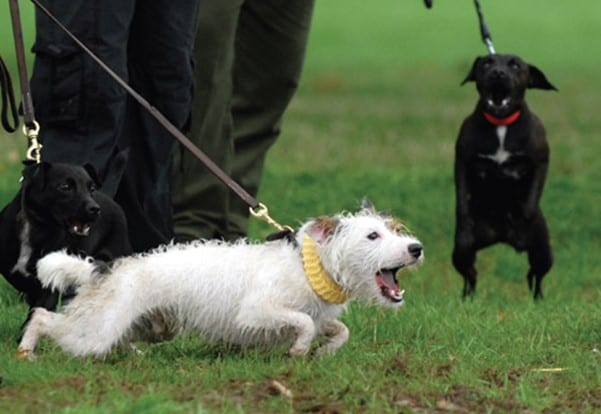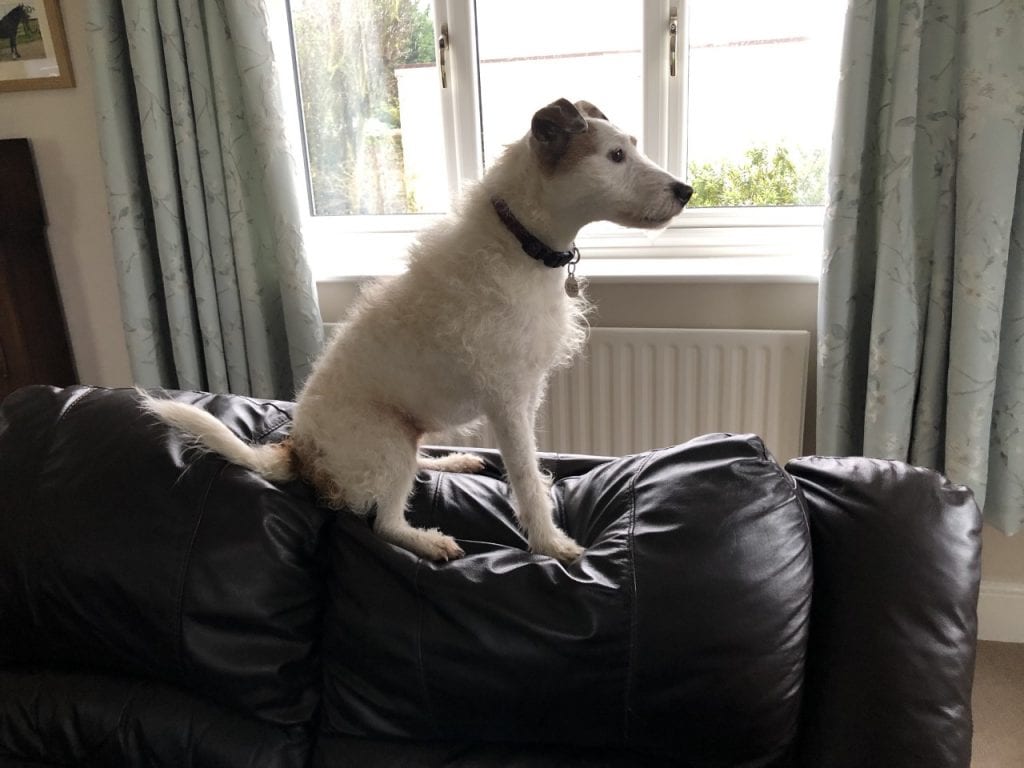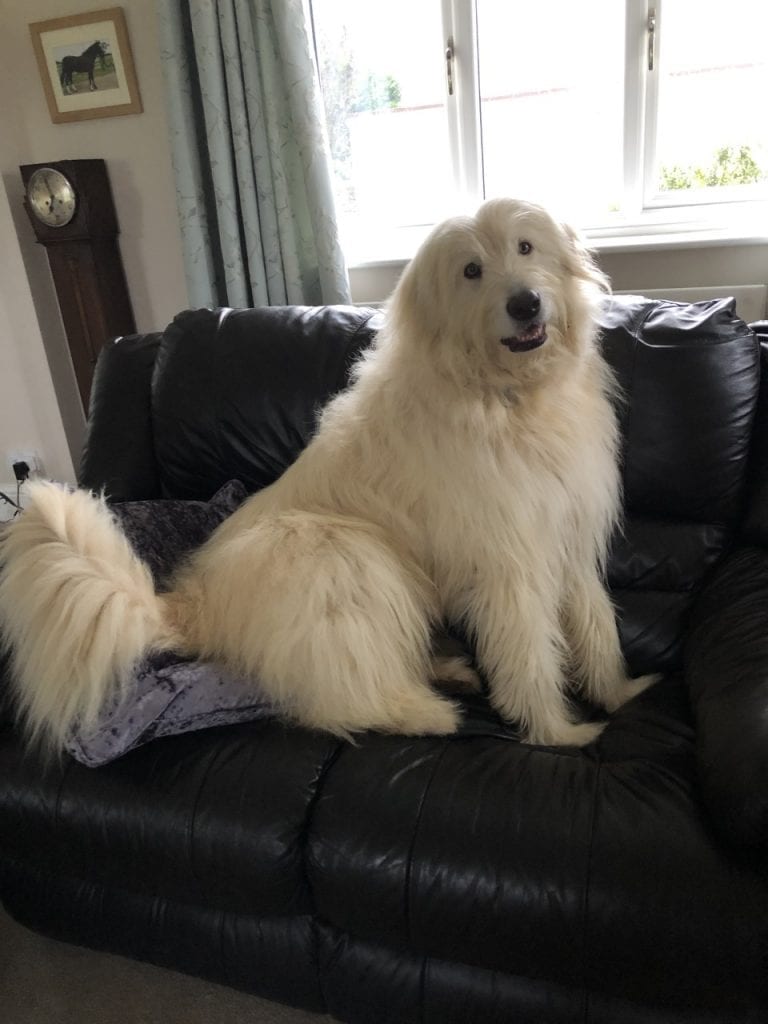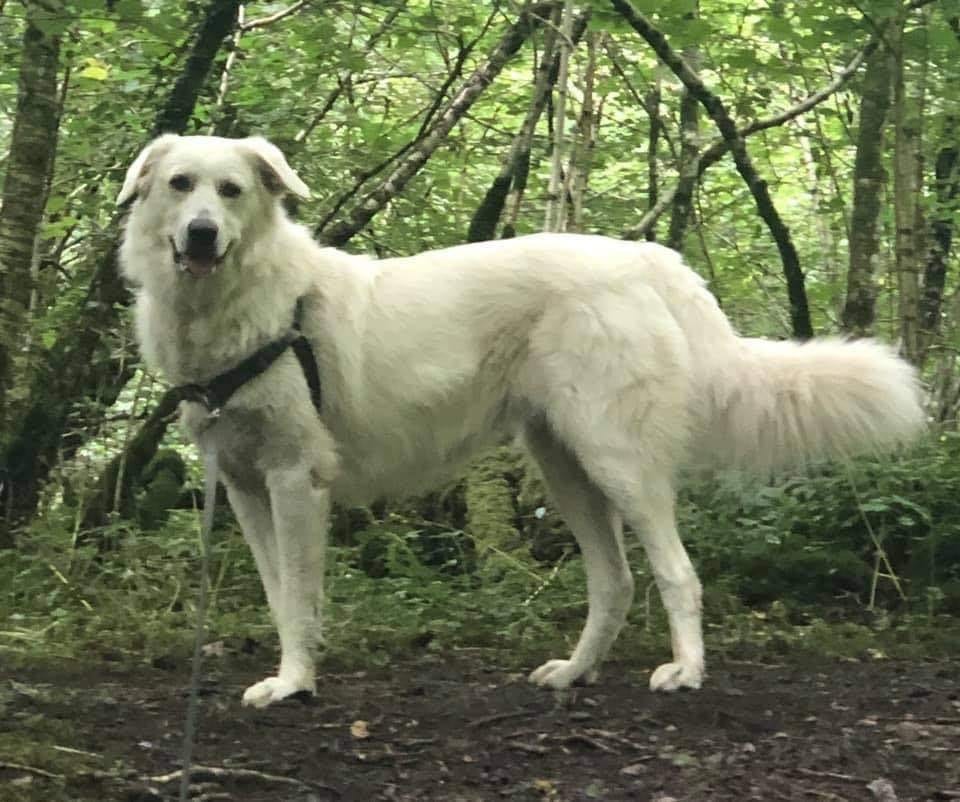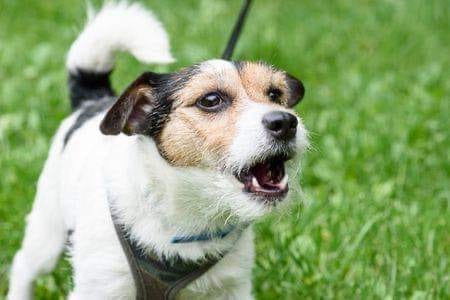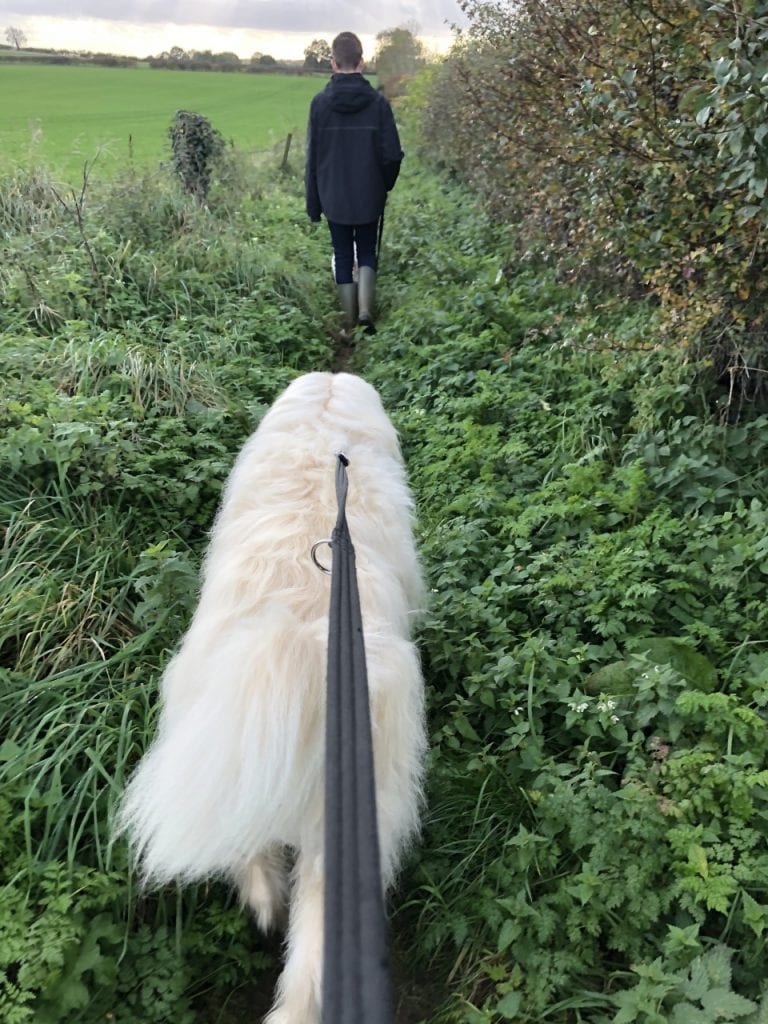Why has your dog started to bark at people in the house, or while out walking?
Here at 1 Dog At A Time Rescue UK we will try to explain why and to offer some guidance. There are various reasons, but the main one is, that your Romanian rescue has now settled in their new home, and are starting to stamp their authority.
However much you love your dog, they still need boundaries set. If dogs are allowed on settees, especially the back of them, so they are above you, or on beds, or any furniture, they will use it to their advantage. The dogs think that they are equal to you, and they will bark to tell you that they believe that they are top dog, and have to protect you, whereas it should be the other way around. Them thinking this way can cause them to get stressed and anxious, which creates a vicious circle.
You need to break this cycle, so if they stand on the settee and look out of the window and bark, stop them being able to do this, by keeping them out of the room, and if they do it while you are in the room with them, tell them no, stop them, and distract them, with treats. If they sit by the front door and bark, keep them away from it. You wouldn’t let your child shout at the top of his voice at strangers through the window, so why should your dog? You may need to give them treats to keep them occupied, there are so many natural treats on the market now.
I know a lot of people like to have cuddles on the sofa, which is fine if you are not having problems, and your dog is chilled and doesn’t bark, but ideally, you should go down to them, and cuddle them on the floor. If they are well behaved and don’t bark, invite them up, but it shouldn’t be a given. This is why we set guidelines when you first adopt. Rescue dogs from Romania, have had nothing, so if you give them everything straight away all at once, they come to expect it, and when they don’t get their way they will play up. You need to be firm, and if they respond to your commands, you reward them. They are very intelligent and will soon learn, but it will not happen in a week, it could take months to get out of this learned behaviour.
Why is my dog barking and lunging at other dogs/people/bikes etc?
There are generally two categories or reasons why dogs behave in this way:
1) Dogs who are lunging and barking trying to create space between them and the other dog. This is usually the reason for dogs who are sometimes nervous or anxious around unfamiliar dogs.
2) Dogs who lunge and bark to try to get closer to the other dog. In this scenario, the dog thinks that the dog gets closer because of their lunging and barking. This is usually seen in dogs who are friendly with other dogs when out on walks or at doggy daycare settings but can exhibit problematic behaviour when on a lead.
Please do remember that a lot of our dogs are street dogs and many have never been on a lead. They would generally have just gone up to another dog under their own terms, with them reading the body language. Street dogs DO NOT want to get injured, as this could mean they can’t look for food, so ultimately dying. They would typically take avoiding action, but being on the lead they can’t make the decision to walk away, so they take the only action left to them, which is to bark.
To complicate matters, some dogs will exhibit frustration around some dogs (for example smaller dogs who they like to play with and are friends with) and fear-related aggression around other dogs (say with bigger dogs that they don’t like to interact with). The general approach with these situations is the same; we need to change the emotional or physiological response your dog has when they see another dog, and we need to teach them what they should do.
Remember if you feel tense and nervous about taking your dog out, they will sense this and be on their guard even more. So try and relax. (I know, easier said than done).
ARE YOU USING THE RIGHT EQUIPMENT?
So, when out walking, the most important thing is the harness. To be able to control your dog correctly, you need one that has the D ring clip at the front or side, rather than on the top of the dogs back, between their shoulder blades. I use an Easy Walk Harness (bought on Amazon), or there is the T Touch Harness, which another option. If you have the D ring at the front, you can pull the dog into you, when they lunge or start to bark, as you have so much more control.
With harnesses that have the D ring on the back, they act like the harness you would put on a Husky to pull a sledge, which is why you see so many people being pulled along by their dogs, however small they are!
Here at 1 Dog, we have devised a three week guide, with the hope that by the end of it, both you and your dog will feel much more comfortable. Please remember, if you have only just adopted your dog, it can take up to 6 months for them to fully settle into a routine, and get used to walking on the lead. In Romania, they could just wander if they were a street dog, or they were attached to a chain in a yard. The best thing you can learn is patience and understanding.
WEEK 1
Try this exercise with your dog. Hopefully, it will do three things: to relax your dog’s emotional state, or their anxiety when on the walk, to help build a better learnt behaviour to replace the lunging and barking and last but not least to reduce pulling.
Please only practice this when other dogs are not around. If you see a dog coming towards you, simply turn around and avoid if possible. If you live in a town/village setting where this is difficult, you may need to plan your walks during this week at times when not as many people and their dogs are out (get up and out early or walk at lunchtime if possible).
Put lots of yummy treats in your pocket, things that they don’t usually get, like 50 small pieces of, cooked sausages or cheese treats, ham or homemade biscuits. Most street dogs will do anything for a tasty morsel! The treats have to be worth your dog stopping barking.
While you are on your walk, the aim is to get your dog to pay attention/ look at you, without you asking them to. When they do this, you need to let them know this is good, by making a sound or noise, so a clicker would be good at this stage or just saying their name. Once you have used the clicker or said their name or a “good” or Well Done”, give them a treat. If the treats are really tasty, they will start checking in/ looking at you more and more on the walk. For this week, every time they look at you, you are going to reward them. Hopefully, by the end of the 20 minute walk, they will be looking for a treat at least 20/30 times.
If your dog only looks at you a few times over the walk, resist the temptation to prompt your dog, it needs to become a habit for them to automatically check-in/look at you. They need to learn this out on their own (just like kids). If your dog learns to do this without coercion, they will keep doing it, and remember it much better.
You might be worried by the amount you are feeding them, but we need to get your dog to look at you much more, so they learn to listen to you and, this will help build good behaviour. If, when a dog goes past you on a regular walk, you can get your dog to sit and look at you, rather than pay attention to the dog, then you are on the road to success. It will also help reduce the chances of them lunging and barking, as they want to know what treat they will get. This helps to reduce any anxiety/ frustration caused by dogs going past. So hopefully they will learn to relax and not see other dogs as a threat.
Putting what you have achieved into practice
Week 2
Find a park bench, a place where you can both sit and dog watch at a safe distance. Ideally, you need to be somewhere that you can watch dogs walking and playing about 20/30 feet away from you. This is the starting distance for most dogs, but every dog is different.
Every day this week, you are going to find that spot and just sit and watch the world go by for 5 to 10 minutes, or more if it’s a nice day. Your dog will wonder what on earth you are doing, but if they look at you, say “Well Done” or click your clicker then give them a treat. If you see a dog approaching in the distance, resist the temptation to tell your dog how to behave, simply wait. You want your dog to be able to watch dogs without reacting, so letting distance help with desensitising them. If you wait long enough, and the distance between you and your dog and the other dog is perfect, then everything they have learnt in the first week should work.
Hopefully, your dog will turn his head around and check in/look at you. If they do, fantastic, tell them “Well Done” or click your clicker and give them a treat. This can be classed as a game, so it is fun. This both reinforces the new behaviour and changes the physiological response that your dog has to seeing another dog ( this is known as counter conditioning).
The aim of this week is to give your dog a chance to practice watching dogs from a distance, but also to encourage their new default behaviour (looking at you instead of lunging and barking). For dogs that are nervous/anxious/frightened of other dogs, this replaces the need to avoid the oncoming dog (when they pay attention to you, the dogs go away). For dogs who want to go and play and get closer to the other dogs, it can teach them that there is a new fun game to play, or if your dog is behaving well, not barking or lunging, they can be allowed to greet the other dogs (if your dog is friendly, and the other owner says it’s ok).
Let’s Crack this.
Week 3
In this week you can start to resume your regular walk. Now when your dog sees other dogs, hopefully, the first thing they will do is look at you for reassurance: if they do, that is brilliant, make sure you praise and reward them. Remember, the overall aim is to reduce the intensity and frequency of the problem behaviour (barking, pulling and lunging) and increase the frequency of the new better behaviour. Please don’t think it will happen every time; this is something that is going to have to be worked on for a long time, or until they no longer react to the other dogs. Keep a rough track of the number of dogs that your dog can walk by without lunging or barking. While you will have good days and bad days, you should notice over one to two months that you see a trend of improving behaviour. Remember that if your dog is still lunging/barking turn away from the other dog “space is your friend”. It would be best if you always allowed enough space to set your dog up for success and so help make it easier for them to make the right choice. Over time, the space required will decrease, and they should be able to meet and greet dogs happily.
How long will this take?
As long as they need is the answer. Some dogs will take a few weeks/months to get the hang of this, then they will start acting appropriately (sniffing the ground) or will approach dogs more politely. Other dogs, unfortunately, due to their backgrounds on the streets and us having no idea of what they have gone through, will need lifelong management, and that’s ok too. Remember, lunging and barking is a stressful behaviour for your dog (and you), and if taking out some treats and controlling space, between them and other dogs helps them feel better and more relaxed, it’s a very small price to pay. They have come so far from being abandoned and abused on the streets of Romania.
If you have two dogs, it would be a good option if possible to be able to take out the lunging/barking dog separately for a while or, if there are two of you in the household, go out walking together, and each of you takes a dog. Make sure that while training, only the person in control of the dog needing training gives the commands.
If you want to let your dog off the lead, and have a good run around, to get rid of some pent-up energy, due to being on the lead all the time, look up secure dog exercise fields on the web. These are fantastic places, they usually cost around £10 for an hour, but are great for recall training, letting your dog’s play and meet friend’s dogs off the lead. You can relax in the knowledge that they are safe, and can’t escape.
I do hope this helps in a small way, and that soon your dog will become a more relaxed pup, and be a joy to walk.

